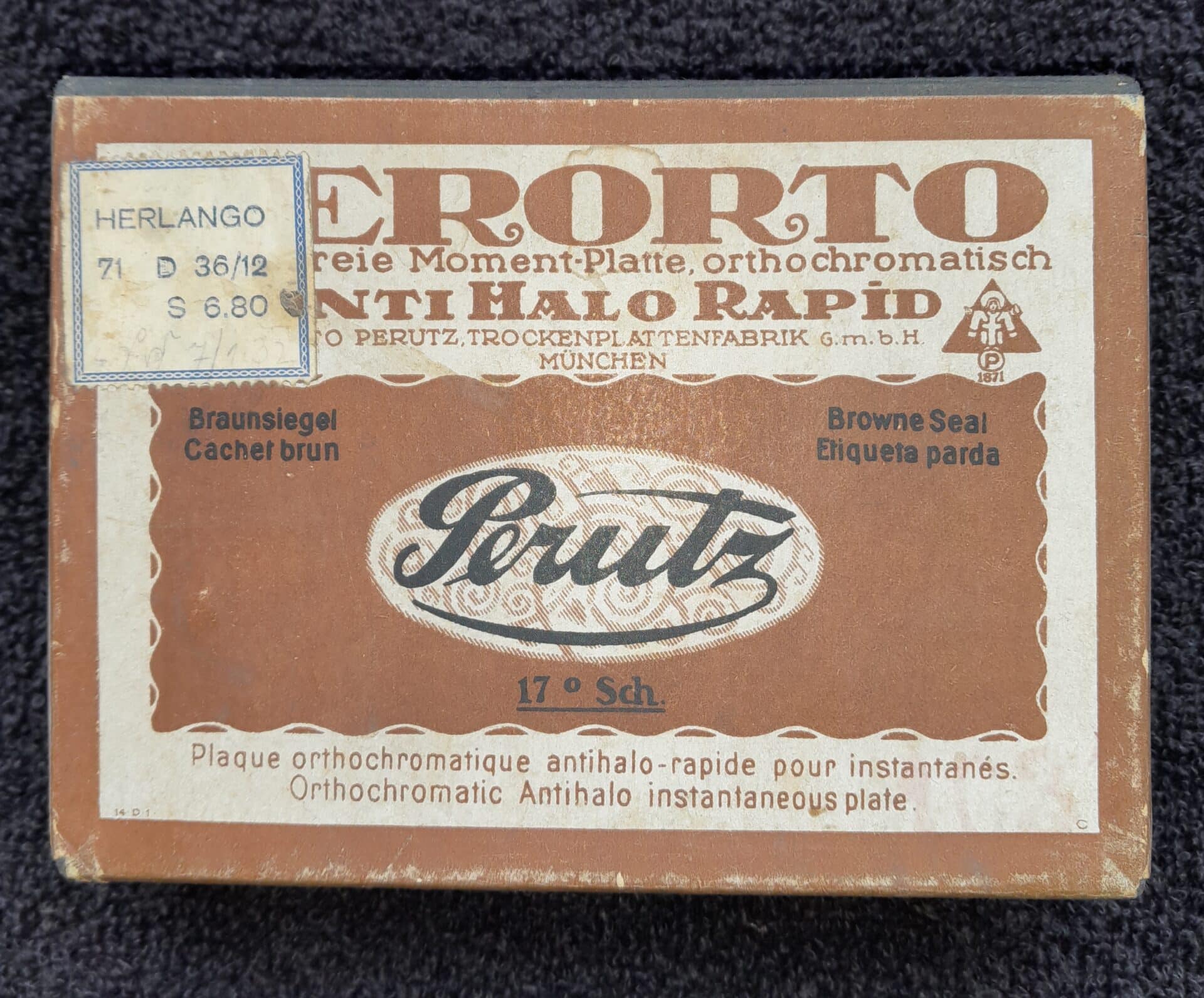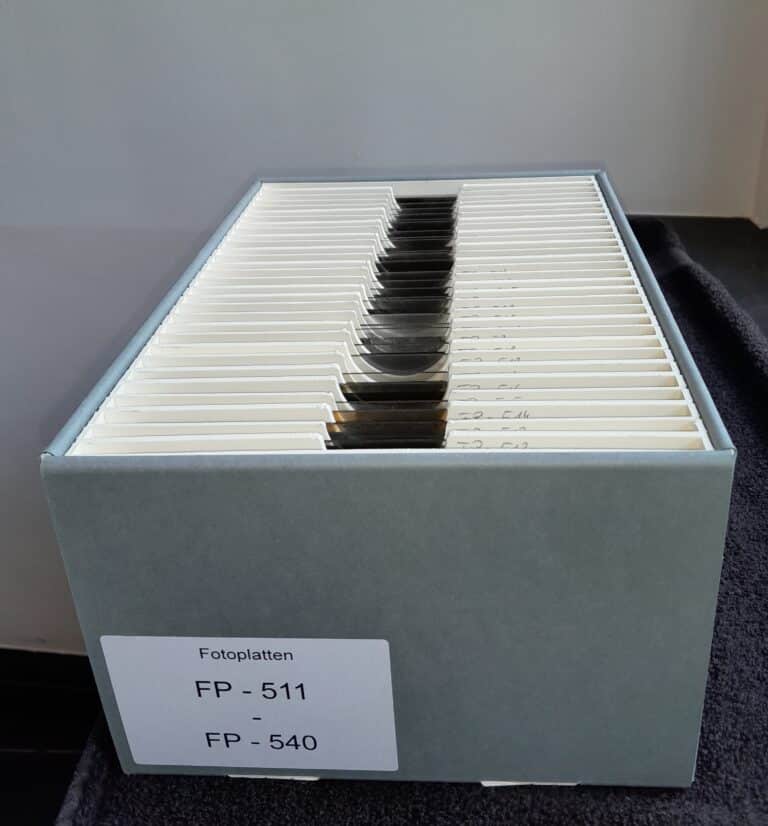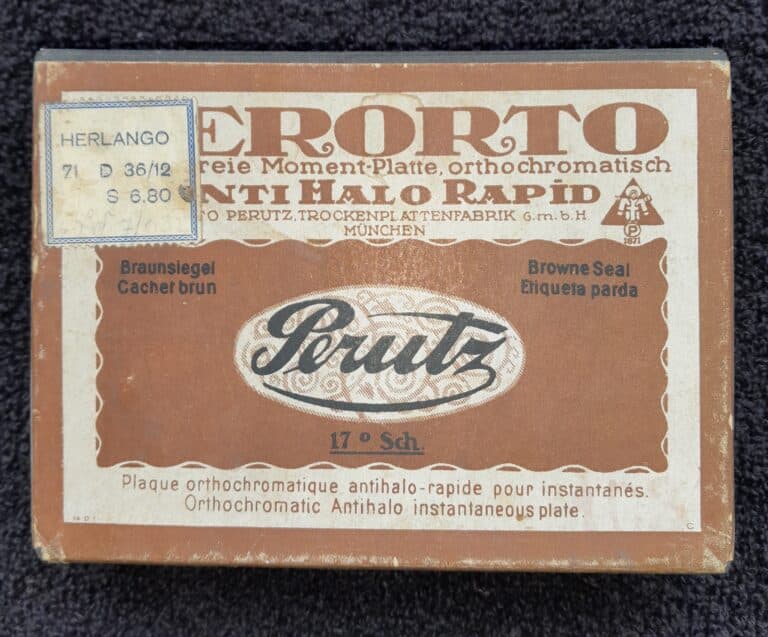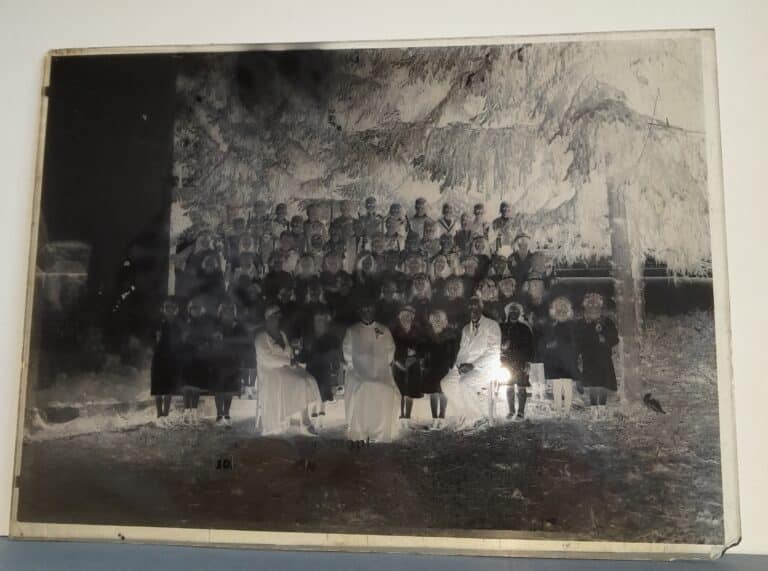Photo Plates
What is a photo plate and what does it look like?
A photographic plate is a metal or glass plate coated with a negative photo emulsion. Glass was the first available carrier material for photo emulsions. It was only when celluloid was invented that photos and films could be produced. These are much lighter in weight and less fragile. For this reason, the photographic plate was quickly ousted from all areas of photography. Only high-precision specialised cameras for photogrammetric and astronomical photography still use them today.
The second largest astroplate archive in the world, with 270,000 photographic plates, is located in Sonneberg in Germany. Due to the availability of ever larger CCD sensors, photographic plates are becoming less important in astronomy there too.
While organising the archive storage, Prior P. Maximilian Schiefermüller came across 2032 glass photo plates, all of which were packed in boxes. They were very dirty and some were broken. They were carefully cleaned with a microfibre cloth, sorted, signed and placed in new custom-made archive boxes. Ernst Krenn scanned the photo plates so that the digitised images could then be entered into the Archivis pro archive information system. They are now available to interested researchers via the database, which can be accessed via our archive homepage (Homepage Admont Abbey > Archive & Library > Archive holdings online).
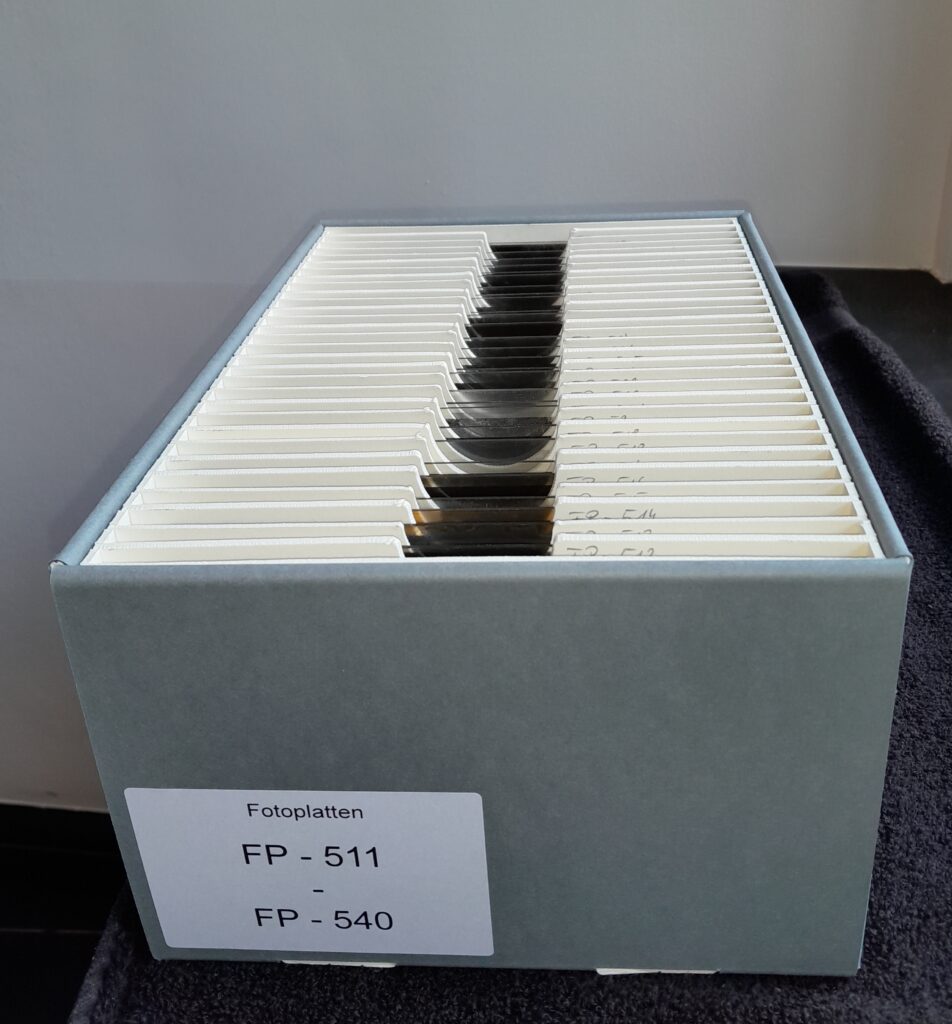
With the cataloguing of this valuable collection in the Admont Abbey Archives, a further step has been taken in the direction of preservation measures and scientific research.
Abbey archivist P. Maximilian Schiefermüller OSB: "The collection of photographic plates in the Admont Abbey Archive is exemplary of the diverse holdings that are kept in our house. The Abbey Archive not only houses records and sources from the foundation of the monastery (1074) to the present day, but also specific collections that we maintain, catalogue and scientifically process: Postcards, coins, medals, building plans, maps, photos, seal impressions and typographies and much more. For me as a historian, our Admont Abbey archive is a treasure trove for any academic work, a never-ending source."
From the abbey archive
(Ute Rohrer)

